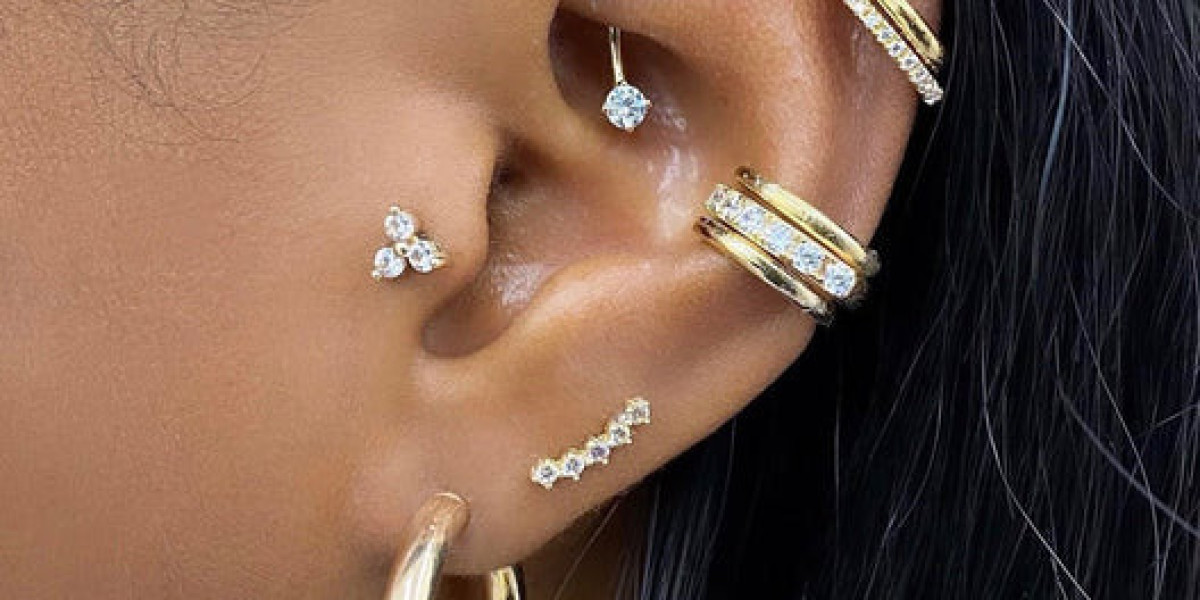Septum piercing have surged in popularity over the past decade, evolving from a niche trend to a mainstream fashion statement. This type of piercing, located in the soft tissue between the nostrils, offers a unique blend of edginess and elegance, appealing to a wide array of individuals. Whether you’re considering getting a septum piercing or you’re already sporting one, understanding the procedure, aftercare, potential risks, and historical context can enhance your experience. This article will provide an in-depth look into septum piercings, ensuring you are well-informed and prepared.
History and Cultural Significance
Septum piercings have a rich history and cultural significance across various societies.
Indigenous Cultures: Many indigenous tribes, such as the Aztecs, Mayans, and Native American tribes, used septum piercings as a rite of passage or a symbol of status and bravery. Warriors often wore bone or tusk jewelry to appear more intimidating.
Indian Culture: In India, septum piercings are part of traditional bridal jewelry in some regions. The "Bulak" is a large septum ring worn by women as a symbol of beauty and marital status.
Modern Western Culture: In contemporary Western culture, septum piercings are often seen as a bold fashion statement. They have been popularized by celebrities, influencers, and fashion icons, making them a mainstream trend.
The Procedure
Understanding the procedure can alleviate anxiety and ensure you know what to expect.
Preparation: Choose a reputable piercing studio with experienced professionals. Ensure the studio follows strict hygiene protocols. Discuss any concerns or questions with your piercer beforehand.
The Piercing Process:
- Cleaning: The piercer will clean the area with an antiseptic solution.
- Marking: A mark will be made to indicate the precise location of the piercing.
- Clamping: A clamp may be used to hold the septum tissue steady.
- Piercing: A hollow needle is used to pierce the septum. The actual piercing is quick, lasting only a few seconds.
- Jewelry Insertion: The initial jewelry, typically a circular barbell or a horseshoe ring, is inserted immediately after the needle is removed.
Pain Level: Pain is subjective, but most people describe the pain as a sharp pinch followed by a throbbing sensation. The pain level is generally considered moderate and tolerable.
Aftercare
Proper aftercare is crucial to ensure healing and prevent infections.
Cleaning: Clean the piercing twice daily with a saline solution or a piercing aftercare spray. Avoid using harsh chemicals like hydrogen peroxide or alcohol.
Avoid Touching: Minimize touching the piercing, especially with unwashed hands, to prevent introducing bacteria.
Hygiene: Maintain good hygiene by keeping the area clean and dry. Be cautious with makeup and facial products.
Jewelry Care: Avoid changing the jewelry until the piercing is fully healed, typically around 6 to 8 weeks. Consult your piercer before making any changes.
Healing Process
The healing process varies among individuals but generally follows these stages:
Initial Healing (0-2 weeks): The piercing may be sore, swollen, and slightly red. Some bleeding and discharge are normal.
Mid-Healing (2-6 weeks): The swelling should subside, and the piercing will start to stabilize. Continue diligent cleaning.
Full Healing (6-8 weeks): Most septum piercings are healed within 6 to 8 weeks. However, cartilage piercings can take up to 6 months to fully heal internally.
Potential Risks and Complications
While septum piercings are generally safe, they carry some risks:
Infection: Symptoms of infection include excessive redness, swelling, pain, and discharge. If you suspect an infection, consult your piercer or a healthcare professional immediately.
Septal Hematoma: A rare complication where blood collects under the septum, causing pain and swelling. This requires medical attention.
Allergic Reactions: Some individuals may be allergic to certain metals. Choose hypoallergenic jewelry made from materials like surgical steel, titanium, or niobium.
Migration and Rejection: Though uncommon, the body may push out the jewelry, leading to migration or rejection. If you notice significant changes in the piercing’s position, consult your piercer.
Jewelry Options
Choosing the right jewelry is essential for both aesthetics and comfort.
Circular Barbell: Popular for initial piercings, it’s easy to clean and can be flipped up into the nostrils for a more discreet look.
Horseshoe Ring: Similar to a circular barbell but with an open end, making it versatile and easy to manage.
Segment Ring: A continuous loop with a removable segment, providing a sleek and seamless appearance.
Clicker Ring: Features a hinged segment that clicks into place, allowing for easy insertion and removal.
Retainers: Clear or flesh-colored retainers are ideal for keeping the piercing open while making it less noticeable.
Tips for Successful Septum Piercing
Choose an Experienced Piercer: An experienced professional ensures proper placement and minimizes risks.
Stay Hydrated and Healthy: A healthy body heals faster. Maintain a balanced diet and stay hydrated.
Be Patient: Healing takes time. Avoid rushing the process and give your body the necessary time to heal properly.
Listen to Your Body: If something feels wrong, such as prolonged pain or unusual discharge, seek professional advice
Educate Yourself: Understanding the procedure, aftercare, and potential risks helps in making informed decisions and ensures a positive piercing experience.
Conclusion
Septum piercings are a striking and versatile form of self-expression with a deep cultural history. By understanding the procedure, committing to proper aftercare, and being aware of potential risks, you can enjoy your septum piercing with confidence and style. Whether you’re a piercing enthusiast or new to body modifications, a septum piercing can be a beautiful addition to your look, reflecting both individuality and tradition.








